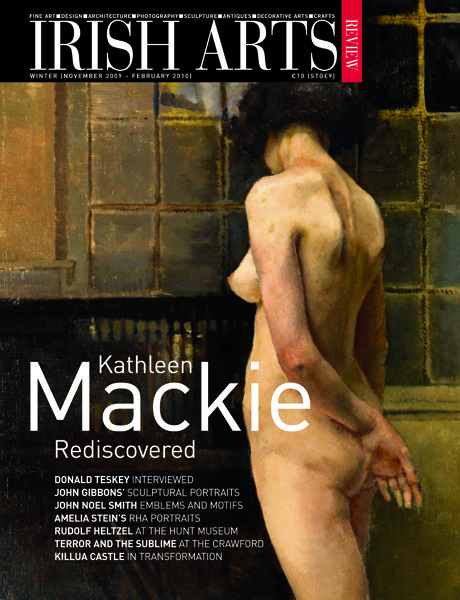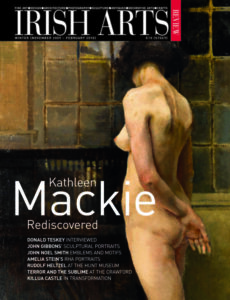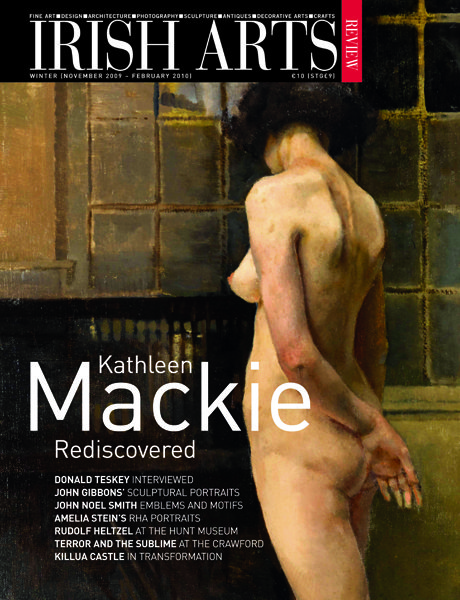

The exhibition referenced throughout the following article is ‘The Devil is in the Detail: Celebrating the Jewellery of Rudolf Heltzel’ which ran at the Hunt Museum, Limerick in December 2009.
On the eve of his show at the Hunt Museum, Limerick, in Winter 2009 Joseph McBrinn considered the unique aesthetic Rudolf Heltzel has brought to jewellery design.
This winter the Hunt Museum in Limerick plays host to a major exhibition of work by the distinguished metalworker and jeweller Rudolf Heltzel. ‘The Devil is in the Detail: Celebrating the Jewellery of Rudolf Heltzel’ provides an overview of current work by the artist. Challenging the politics of value created by the combination of gem stones and their settings in modern jewellery has been the cornerstone of Heltzel’s work. The design historian Hilary O’Kelly has stated that ‘Heltzel’s handmade, chunky silver and gold jewellery’ is easy to recognise but the ‘richly coloured’ stones are not ‘necessarily identifiable.’ Heltzel’s new work contains, aside from sapphires and diamonds, non-precious stones such as agate, pearl, quartz, carnelian, onyx, topaz, and tourmaline often playing on the unique beauty found in their oxidisation and crystallisation (Figs 1&4).
Born in Germany in 1940, Rudolf Heltzel came to Ireland forty-three years ago and has since established an unrivalled position in the evolution of modern Irish jewellery (Fig 3). His work is as far from traditional jewellery as any of the highly conceptual and theoretical jewellery made in the late 20th and early 21st century. His rings, necklaces and pendants are based upon a tight vocabulary of concave, elliptical and rectangular shapes that are resolutely Modernist (Fig 6) and that are also the material realisations of the German concept of Kunsthandwerk. They reveal knowledge of Cubist, Constructivist and Surrealist painting and sculpture as well as mid-late 20th century preoccupations such as the bio-morphic, primitivist and architectonic. His work mixes the earlier linear, geometric and fiercely three-dimensional shapes with molecular structures, kinetic force combining stones and settings in a remarkable fusion of visual beauty and poetic force.
Emerging in the mid 1960s with a distinct style, Rudolf Heltzel’s work finds context in the architectonic jewellery that evolved in the 1960s and 1970s. His highly polished silver surfaces that visually reference industrial engineering, yet are painstakingly handmade and the Zeitgeist use of non-precious gem stones in unconventional settings, locate Heltzel in the centre of a wider international movement. His jewellery finds comparison in the work of fellow German Friedrich Becker, but also in the work of Scandinavians such as the Swedes, Sigurd Persson and Wiwen Nilsson, the Danes, Bent Exner and Bent Knudsen, and the Finns, Mirjam Salminen and Elis Kauppi. Indeed, in the 1960s before coming to Ireland Heltzel spent time in Sigurd Persson’s workshop in Stockholm.
In 1962 the epoch-making Design in Ireland report found ‘very few examples’ of metalwork to review from ‘cutlery, kitchenware, tools and appliances’ to ‘cooking pots, forks and oil lamps’ the recommendations stated that ‘if it is intended to develop original products foreign talent will be necessary.’ Subsequently, in 1966, at the age of just twenty-six, Rudolf Heltzel came to Ireland at the invitation of Córas Tráchtála (the Irish Export Board), who had commissioned the Design in Ireland report in 1961 and established the Kilkenny Design Workshops (KDW) in 1963. Heltzel was charged with building up the metal and silver department at KDW that had been set up by Michael Hillier. In contrast with Hillier, Heltzel believed designer and maker should be one and the same person. In 1956 Heltzel had entered the Berliner Meisterschule f√ºr das Kunsthandwerk in the postwar climate still influenced by ideas pioneered at the Bauhaus before it was curtailed by the war. The idea of generating prototypes for industry pioneered at schools such as the Bauhaus and subsequently at KDW finds its common link in Heltzel. However, Heltzel was always resistant to having his designs made up by others and realised much of the work produced at KDW was really failing to influence industry. He left KDW in 1968 and set up his own studio in Kilkenny where he has remained ever since.
The historian and curator Mairead Dunlevy had commented that although KDW aimed at improving ‘standards and introducing new skill’ the result was a marked influence of ‘Scandinavian and German influence on custom-made jewellery styles.’ And although there were several native-trained jewellery makers such as Pádraig √ì Math√∫na (see Muireann Charleton’s article in this issue) the influence of Heltzel’s ideas and example was profound. The current work by Rudolf Heltzel on display at Limerick’s Hunt Museum reveals a remarkable consistency in aesthetic philosophy, stylistic synthesis and artistic integrity. The development and identity of the studio crafts in Ireland (the equivalent of the German Kunsthandwerk) owes much to Heltzel’s work and his example and anyone who sees the remarkable jewellery at the Hunt Museum’s exhibition will agree that the devil really is in the detail.
The author is grateful to Rudolf Heltzel and Christopher Heltzel, the Hunt Museum and Susan Keating.
Joseph McBrinn lectures at the School of Art and Design at the University of Ulster in Belfast.
This article first appeared in the Irish Arts Review, Volume 26, Issue 4, Winter 2009.



